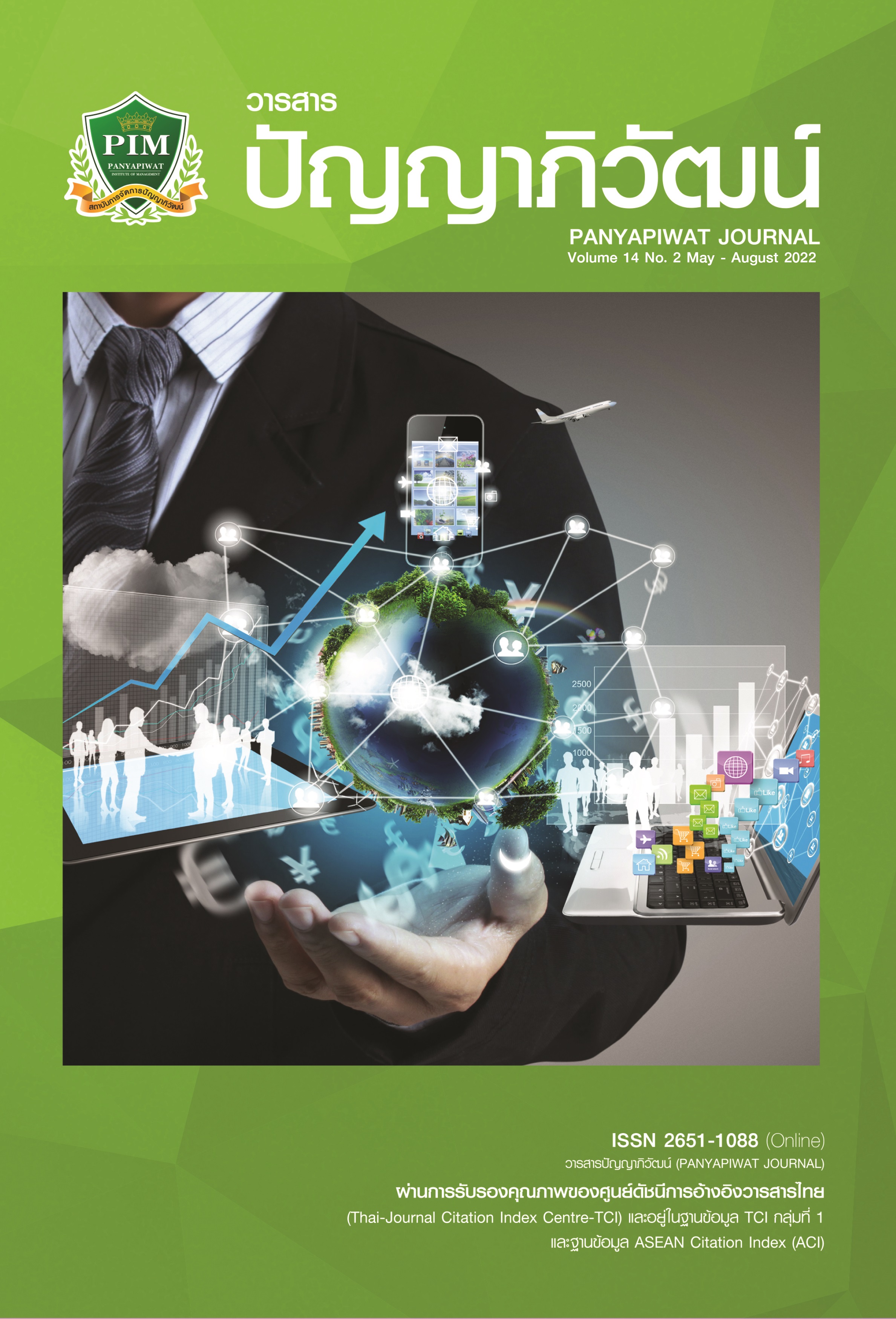พลังชุมชน การมีส่วนร่วม ความพอเพียงกับการดำรงชีวิตของเกษตรกร บนพื้นที่ผลกระทบนาเกลือนาข้าว
Main Article Content
บทคัดย่อ
การวิจัยนี้มีวัตถุประสงค์เพื่อศึกษา 1) พลังชุมชนกลุ่มนาเกลือและนาข้าว 2) ศักยภาพชุมชน การมีส่วนร่วมความพอเพียง วิถีชีวิตและปัจจัยด้านอาชีพของเกษตรกรนาเกลือและนาข้าวในอำเภอบ้านดุง จังหวัดอุดรธานี เก็บรวบรวมข้อมูลโดยใช้แบบสอบถามจำนวน 400 คน การสัมภาษณ์กลุ่มอาชีพและการสนทนากลุ่มย่อยกับเกษตรกรนาเกลือนาข้าว ผลการวิจัยพบว่า 1) พลังชุมชนเป็นการรวมตัวกลุ่มเกษตรกรในกิจกรรมการพัฒนาพื้นที่กระทบนาเกลือนาข้าวซึ่งกิจกรรมที่สะท้อนพลังชุมชนสูงสุดคือ การดำรงชีวิตต้องยึดมั่นในกฎกติกาของชุมชน และการทำงานพัฒนา งานจิตอาสา งานบุญประจำหมู่บ้าน ทุกคนต้องร่วมคิดร่วมใจ ร่วมทำ 2) ศักยภาพชุมชนบ่งชี้ถึงการประกอบอาชีพของแต่ละครอบครัวที่เกษตรกรส่วนใหญ่ยึดเกษตร ทฤษฎีใหม่ของในหลวงรัชกาลที่ 9 เป็นแนวทางซึ่งมีความศรัทธาอย่างมั่นคงในหลักปรัชญาของเศรษฐกิจพอเพียง รวมถึงการมีส่วนร่วมของเกษตรกรมีระดับมากที่สุดคือ กิจกรรมทำบุญตามวัฒนธรรมเทศกาลประจำหมู่บ้าน และการร่วมมือกันประหยัดใช้สิ่งของในครัวเรือน ลด ละ เลิกอบายมุขในวันพระ ส่วนวิธีพอเพียงของเกษตรกรเน้นการออมเงินในธนาคาร และกองทุนออมทรัพย์หมู่บ้าน นอกจากนี้พื้นที่ว่างบริเวณบ้านมีการปลูกผักสวนครัวที่จำเป็นไว้ซึ่งวิถีชีวิตทั่วไปเป็นวิถีเกษตร ทอผ้า และทำบายศรีจำหน่ายที่แหล่งท่องเที่ยวคำชะโนด
Article Details

อนุญาตภายใต้เงื่อนไข Creative Commons Attribution-NonCommercial-NoDerivatives 4.0 International License.
“ข้าพเจ้าและผู้เขียนร่วม (ถ้ามี) ขอรับรองว่า บทความที่เสนอมานี้ยังไม่เคยได้รับการตีพิมพ์และไม่ได้อยู่ระหว่างกระบวนการพิจารณาลงตีพิมพ์ในวารสารหรือแหล่งเผยแพร่อื่นใด ข้าพเจ้าและผู้เขียนร่วมยอมรับหลักเกณฑ์การพิจารณาต้นฉบับ ทั้งยินยอมให้กองบรรณาธิการมีสิทธิ์พิจารณาและตรวจแก้ต้นฉบับได้ตามที่เห็นสมควร พร้อมนี้ขอมอบลิขสิทธิ์บทความที่ได้รับการตีพิมพ์ให้แก่สถาบันการจัดการปัญญาภิวัฒน์หากมีการฟ้องร้องเรื่องการละเมิดลิขสิทธิ์เกี่ยวกับภาพ กราฟ ข้อความส่วนใดส่วนหนึ่งและ/หรือข้อคิดเห็นที่ปรากฏในบทความข้าพเจ้าและผู้เขียนร่วมยินยอมรับผิดชอบแต่เพียงฝ่ายเดียว”
เอกสารอ้างอิง
Barnes, M., Rodger, R., & Whyte, C. (1997). Empowerment though community development in recreation and leisure. ADP. http://www.adp.lin.ca/resource//html/Vol24/v24n1a7.htm
Chaipattana Foundation. (2007). Sufficiency economy and the new theory. Amarin Printing & Publishing. [in Thai]
Chaipattana Foundation. (2014). Sufficiency economy and the new theory. Amarin Printing & Publishing. [in Thai]
Chantarasorn, W. (2011). Public sector management according to the philosophy of sufficiency economy. Suan Sunandha Rajabhat University. [in Thai]
Cohen, J., & Uphoff, N. (1977). Rural development participation: Concept and measures for project design implementation and evaluation. Rural Development Committee Center for International Studies, Cornell University.
Cohen, J., & Uphoff, N. (1980). Participation’s place in rural development: Seeking clarity through specificity. World Development, (8), 213-235.
Erwin, W. (1976). Participation management: Concept, theory and implementation. Georgia State University.
Gibson, J. M. (1991). A concept analysis of empowerment. Journal of Advanced Nursing, 16 (March), 354-361.
Hanrungcharothon, U. (2008). Community empowerment. Journal of Nursing Science Naresuan University Year 2 (Special Edition), 2, 1-5. [in Thai]
Kaewthep, K. (1995). A tool for working in community culture. The Catholic Council of Thailand for Development. [in Thai]
Khantikul, S. (2020, December 18). Interviewed by P. Phukamchanoad [Tape recording]. Ban Dung District, Udon Thani Province. [in Thai]
Kokphol, O. (2009). Kuk-Kid, handbook of public participation for local administrators. Charansanitwong Printing. [in Thai]
Office of the National Economic and Social Development Board. (2001). Ninth national economic and social development plan (2002-2006). Teachers Council of Thailand Ladprao. [in Thai]
Office of the National Economic and Social Development Board. (2007). Philosophy of sufficiency economy. 21 Century. [in Thai]
Patanaponasa, N. (1990). Guidelines for public participation in development. Office of the National Research Council of Thailand. [in Thai]
Perkins, D. D., & Zimmerman, M. A. (1995). Empowerment theory, research, and application. American Journal of Community Psychology, 23(5), 569-579.
Phukamchanoad, P. (2009). The participation of community committee in sub-community development in Dusit District, Bangkok. Suan Sunandha Rajabhat University. [in Thai]
Phukamchanoad, P. (2016). The model of human capital development for progressing from poverty to “The level of sufficiency: Happy E-san” under the sufficiency economy philosophy: A case study of the upper north eastern region 1 local residents. Suan Sunandha Rajabhat University. [in Thai]
Phukamchanoad, P. (2017). Social development of happiness based on philosophy of sufficiency economy affected to paddy field and rock salt field with participation of the Baan Dung District, Udon Thani Province, Thailand. Suan Sunandha Rajabhat University. [in Thai]
Prueksununt, P., Supapongpichate, R., & Buawatana, M. (2003). Participatory learning process of community in livable city development. Pranburi Municipality Prachuap Khiri Khan Province. Health Center 4 Ratchaburi. [in Thai]
Reeder, W. W. (1974). Some aspects of the informal social participation of focus families in New York State [Unpublished doctoral dissertation]. Cornell University.
Rerkrai, D. (1981). Rural development: Social development principles and basic concepts. Kasetsart University. [in Thai]
Saphachokchai, O. (1995). Creating the participation of people in community development. Thailand Development Research Institute. [in Thai]
Tantivejkul, S. (1998). Life in the Sufficiency Economy System according to the Royal Initiative. Journal of Water, National Institute of Development Administration, (Dec 1998-Jan 1999), 16. [in Thai]
The United Nations Educational, Scientific and Cultural Organization (UNESCO). (1998). Technical working group meeting on community learning centre Chiang Rai, Thailand. UNESCO Principle Regional Office for Asia and the Pacific.
Wuttimethee, Y. (1993). Principles of community development and rural development. Thai Aid. [in Thai]
Yamane, T. (1973). Statistics: An introductory analysis (3rd ed.). Harper.


